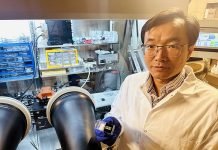
What is Autism?
Autism, or Autism Spectrum Disorder (ASD), is a condition that affects how a person communicates with and relates to other people.
It also affects how they experience the world around them. Some people with autism might have trouble with social interactions, or they might have interests and behaviors that others find unusual.
Autism can be mild or severe, and it’s different for every person who has it.
What’s the Problem?
Diagnosing autism can be a challenge. Doctors often have to rely on observing a child’s behavior and development.
They might watch how a child plays, interacts with others, and communicates. However, these observations can be quite subjective, meaning different doctors might come to different conclusions.
What’s This New Study?
Recently, researchers from the Yonsei University College of Medicine in South Korea did an interesting study. They used something called “deep learning” to help identify autism in children.
Deep learning is a type of artificial intelligence, where computers can learn from examples and experiences, just like humans do.
But in this case, the computers were trained to watch videos of children and look for signs of autism.
What’s “Joint Attention”?
The researchers focused on something called “joint attention.” This is the ability to share focus with another person on an object or event.
For example, if a child looks where you’re pointing or follows your gaze, that’s joint attention. Children with autism often struggle with this.
How Did They Do It?
In the study, they made videos of children with and without autism while they were doing joint attention tasks. Then, they used these videos to train their deep learning system.
They taught it to tell the difference between children with autism and those without, and also to tell how severe a child’s autism might be.
And the Results?
The system did amazingly well! It was almost perfect at distinguishing between children with autism and those without. It was also pretty good at figuring out how severe a child’s autism was. In the world of deep learning, these results are fantastic.
What Does This Mean?
The researchers are very excited about their findings. They believe this could be a new way to gather lots of data about behavioral signs of conditions like autism.
This kind of system could be used in a variety of settings and for many different conditions. It could also make diagnosis more objective, meaning it’s less based on personal opinions.
What’s Next?
There’s still lots to learn. For example, the researchers want to know if their system works as well in real-world situations as it did in their study.
But this is a great start. By combining human knowledge with the power of artificial intelligence, we might be able to improve our understanding of autism and help those who live with it.
Also, keep in mind that while this study sounds very promising, the researchers have applied for patents for their methods, and some are linked to a company called LumanLab. So, they have a financial interest in this technology.
If you care about autism, please read studies about vitamin D that may hold the clue to more autism, and vitamin D could help lower the risk of autoimmune diseases.
For more information about health, please see recent studies about rare blood clots after COVID-19 vaccination, and new therapy from bananas may help treat COVID-19.
The study was published in JAMA Network Open.
Copyright © 2023 Knowridge Science Report. All rights reserved.




